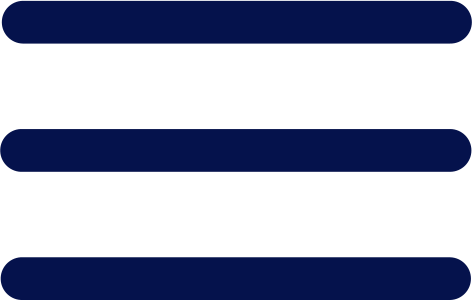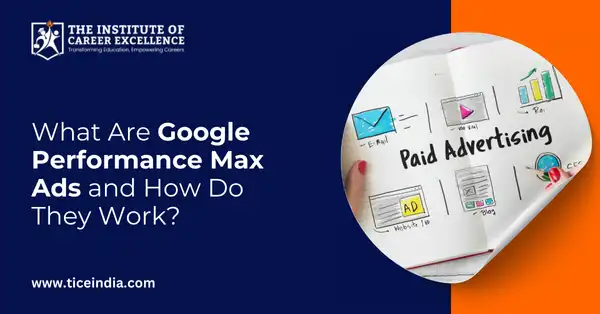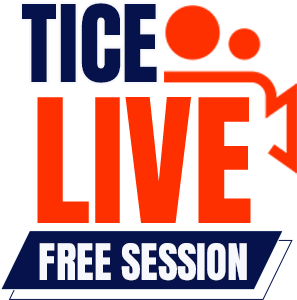
Posted On: February 11, 2025
What Is PPC? Everything You Need to Know About Pay-Per-Click Advertising
Table of Contents
- Introduction: What Is PPC?
- Difference Between PPC, SEM, and SEO
- How Does PPC Work?
- Why Is PPC Important in Digital Marketing?
- Key Factors for a Successful PPC Strategy & Campaign Planning
- Top PPC Advertising Platforms
- Types of PPC Ads
- Why TICE is the Best Choice to Learn Digital Marketing
- FAQs
- Conclusion
PPC full form is Pay-Per-Click, a type of paid advertising in digital marketing where advertisers pay a fee each time their ad is clicked. What is PPC? It is an online advertising model that allows businesses to place ads on search engines, social media platforms, and other digital channels to attract potential customers.
Understanding PPC in Digital Marketing
PPC in digital marketing is one of the most efficient ways to reach a target audience quickly. Unlike organic strategies, such as SEO, which take time to yield results, pay per click advertising ensures immediate visibility and traffic to a website. Advertisers bid on keywords relevant to their business, and their ads appear when users search for those keywords. When a user clicks on the ad, the advertiser is charged a certain amount, making it a cost-effective and measurable advertising strategy.
Pay Per Click Advertising Examples
Some pay per click advertising examples include:
Google Ads – Displayed at the top of search engine results pages.
Facebook Ads – Targeted ads appearing on users' newsfeeds.
YouTube Ads – Video-based ads played before or during a video.
Instagram Ads – Sponsored posts appearing in users' feeds and stories.
LinkedIn Ads – B2B-oriented ads shown to professionals.
Benefits of PPC
There are numerous benefits of PPC, making it a preferred choice for businesses looking for rapid growth and online visibility:
Instant Traffic – Unlike SEO, PPC drives immediate traffic to websites.
Highly Targeted Ads – Ads can be tailored based on location, demographics, interests, and search behavior.
Measurable Performance – PPC platforms provide analytics to track conversions, ROI, and engagement.
Flexible Budgeting – Advertisers can set daily or monthly spending limits to control costs.
Increases Brand Awareness – Even if users do not click, PPC ads enhance brand recognition.
2. Difference Between PPC, SEM, and SEO
While PPC, SEM, and SEO are closely related, they serve different purposes:
PPC (Pay-Per-Click Advertising)
PPC full form is Pay-Per-Click, a model where businesses bid on keywords and pay for each click on their ad. PPC in digital marketing is primarily used to generate immediate traffic and leads by placing paid ads on search engines and social media platforms. Pay per click ads appear at the top of search engine results pages (SERPs) and other digital spaces, ensuring high visibility.
One of the best pay per click advertising examples is Google Ads, where businesses bid on specific keywords to show their ads to potential customers. The benefits of PPC include fast results, precise audience targeting, and a flexible budget structure. Paid advertising in digital marketing is a key strategy for brands looking to gain quick traction and measurable success.
SEM (Search Engine Marketing)
SEM is a broader term that includes both PPC and SEO. It refers to all strategies aimed at increasing a website’s visibility on search engines. PPC advertising is a major component of SEM, as it ensures that businesses appear at the top of search results. However, SEM also includes organic efforts like SEO, making it a comprehensive approach to digital marketing.
SEO (Search Engine Optimization)
SEO is a non-paid method of improving website ranking through organic strategies such as keyword optimization, content marketing, and backlinking. Unlike PPC, which provides instant results, SEO takes time to build but offers long-term benefits. SEO focuses on optimizing website structure, enhancing user experience, and producing high-quality content to rank higher in search results.
While PPC advertising delivers immediate traffic, SEO ensures sustainable growth. A well-balanced digital marketing strategy often includes both PPC and SEO to maximize online visibility and business success. By leveraging paid advertising in digital marketing alongside organic efforts, brands can achieve their marketing goals effectively.
3. How Does PPC Work?
How Does PPC Work?
Pay-Per-Click (PPC) advertising is a digital marketing model where advertisers pay a fee each time a user clicks on their ad. This system allows businesses to drive targeted traffic to their websites, helping them generate leads and conversions effectively. PPC ads appear on search engines like Google and Bing, as well as on social media platforms such as Facebook, Instagram, and LinkedIn.
PPC operates through a structured bidding process where advertisers compete for ad placements based on keywords, audience targeting, and other factors. Let’s dive into the detailed process of how PPC works:
1. Keyword Selection
Before launching a PPC campaign, advertisers must select the right keywords—terms and phrases that potential customers are likely to search for. These keywords help determine when and where the ad appears. The process involves:
- Keyword Research: Using tools like Google Keyword Planner, SEMrush, or Ahrefs to find relevant keywords with high search volume and low competition.
- Match Types: Choosing how closely the user’s search query should match the selected keyword. PPC platforms offer different match types:
- Broad Match: Shows ads for related searches, even if they don’t include the exact keyword.
- Phrase Match: Displays ads for searches containing the exact phrase or close variations.
- Exact Match: Ads appear only when the search query exactly matches the keyword.
- Negative Keywords: Filtering out irrelevant searches to prevent wasteful spending.
2. Ad Auction
Once keywords are chosen, advertisers enter an auction system. Every time a user enters a search query, Google Ads (or another PPC platform) determines which ads to display based on:
- Bid Amount: The maximum amount an advertiser is willing to pay per click.
- Quality Score: A score (from 1 to 10) assigned by Google based on the ad’s relevance, expected click-through rate (CTR), and the landing page experience. A high Quality Score can lower costs and improve ad placements.
- Ad Rank: A combination of bid amount and Quality Score that determines an ad’s position on the search results page. The formula is:
AdRank=BidAmount×QualityScore
3. Ad Placement
Based on the auction results, the PPC platform places ads in prominent positions. The highest-ranked ad usually appears at the top of the search results page, followed by lower-ranked ads. However, even if an advertiser bids higher, a lower Quality Score can push their ad further down.
4. User Clicks the Ad
When users see an ad that matches their search intent, they may click on it. The advertiser is charged only when a user clicks, not when the ad is displayed. This makes PPC a cost-effective model since advertisers only pay for actual engagement.
5. Landing Page Experience
After clicking the ad, users are directed to a landing page designed to convert visitors into customers. A well-optimized landing page should:
Have a clear call-to-action (CTA), such as "Buy Now" or "Sign Up."
Load quickly and be mobile-friendly.
Offer relevant content that aligns with the ad.
Provide a seamless user experience to increase conversion rates.
4. Why Is PPC Important in Digital Marketing?
In today’s digital landscape, businesses strive to reach their target audience efficiently and maximize their return on investment (ROI). PPC in digital marketing plays a crucial role in achieving these goals. But before diving into its importance, let’s understand the basics.
PPC, or Pay-Per-Click advertising, is a digital marketing model where advertisers pay a fee each time someone clicks on their ad. This method allows businesses to drive immediate traffic to their websites, landing pages, or product listings, ensuring faster results compared to organic methods like SEO.
Popular pay-per-click advertising examples include:
- Google Ads (Search & Display): Ads appear on Google’s search results or partner websites.
- Facebook & Instagram Ads: PPC ads target users based on interests and demographics.
- LinkedIn Ads: Ideal for B2B marketing and professional outreach.
- Amazon Sponsored Ads: Boost product visibility on Amazon’s marketplace.
Now, let’s explore why PPC in digital marketing is essential.
1. Instant Traffic and Faster Results
Unlike SEO, which requires months to rank organically, PPC in digital marketing delivers immediate results. The moment a campaign is launched, pay per click ads start appearing on search engines or social media platforms. Businesses can instantly attract potential customers and generate leads, making PPC ideal for time-sensitive promotions, product launches, or seasonal sales.
2. Highly Targeted Advertising
One of the greatest benefits of PPC is its ability to target a specific audience. PPC platforms provide advanced targeting options, such as:
- Demographics: Age, gender, income, and education level.
- Location-Based Targeting: Ads can be shown in specific cities, states, or even a radius around a business location.
- Interests & Behavior: Target users based on their browsing history and online behavior.
- Device Targeting: Choose between desktop, mobile, or tablet users.
With such precision, businesses can ensure their pay per click ads reach the right audience at the right time, improving conversion rates.
3. Cost-Effective and Budget-Friendly
Unlike traditional advertising, where businesses pay a fixed cost regardless of engagement, paid advertising in digital marketing follows a flexible model. Advertisers only pay when a user clicks on their ad, making it a cost-effective strategy. Additionally, businesses can:
Set a daily or monthly budget.
Pause or adjust campaigns anytime.
Optimize bids based on performance.
By controlling spending and paying only for real engagement, companies maximize their marketing budget.
4. Measurable and Trackable Performance
One of the standout benefits of PPC is its transparency. Platforms like Google Ads provide detailed insights into:
Click-through rate (CTR)
Conversion rate
Cost-per-click (CPC)
Return on ad spend (ROAS)
With these metrics, businesses can refine their campaigns, adjust their targeting, and improve ad performance in real-time.
5. Boosts Brand Awareness
Even when users don’t click on pay per click ads, they still see the brand name, message, and offer. This repeated exposure helps increase brand awareness and keeps the business top-of-mind for future purchases.
5. Key Factors for a Successful PPC Strategy & Campaign Planning
1. Keyword Research: Choosing Relevant Keywords with High Intent
One of the most critical aspects of pay per click advertising is selecting the right keywords. Without proper keyword research, even the most well-crafted pay per click ads may fail to deliver results. Businesses must focus on:
High-Intent Keywords: These are keywords that indicate strong purchase intent, such as “buy furniture online” instead of “best furniture brands.”
Keyword Match Types:
- Broad Match: Targets a wide range of search queries, but may attract irrelevant traffic.
- Phrase Match: Ensures ads appear for searches containing the keyword phrase in the correct order.
- Exact Match: Shows ads only for searches that exactly match the selected keyword.
- Negative Keywords: Helps prevent wasted ad spend by excluding irrelevant searches. For example, an online store selling premium furniture may exclude searches containing “cheap” or “free.”
Proper keyword selection ensures that PPC in digital marketing reaches the right audience with high conversion potential.
2. Ad Copy Optimization: Writing Compelling Headlines and Descriptions
An engaging ad copy is essential for improving click-through rates (CTR) and driving traffic. Pay per click ads should:
- Use Clear and Persuasive Headlines: The headline is the first thing users see, so it should be compelling and relevant. Example: “Modern Office Chairs – 20% Off Today!”
- Highlight Unique Selling Points (USPs): Showcase benefits such as free shipping, discounts, or limited-time offers.
- Include a Strong Call-to-Action (CTA): Encourage users to take action with phrases like “Shop Now,” “Get a Free Quote,” or “Sign Up Today.”
- Utilize Ad Extensions: Google Ads provides options like call extensions, site link extensions, and review extensions to enhance visibility.
Effective ad copy improves engagement, reduces CPC, and maximizes the benefits of PPC campaigns.
3. Landing Page Optimization: Ensuring Pages Are Mobile-Friendly and Conversion-Driven
Driving traffic through paid advertising in digital marketing is only half the battle. The landing page must be designed to convert visitors into customers. Key elements of an optimized landing page include:
- Mobile Responsiveness: A majority of users browse on mobile devices, so pages must load quickly and be easy to navigate.
- Clear and Relevant Content: The page should align with the ad’s promise. If the ad promotes a 20% discount on furniture, the landing page must feature that offer prominently.
- Fast Loading Speed: A slow-loading page increases bounce rates and reduces conversions. Optimizing images, minimizing scripts, and using caching can improve speed.
- Trust Signals: Display customer reviews, testimonials, or security badges to build credibility.
A seamless landing page experience ensures that pay per click advertising translates into actual sales.
4. Bid Management: Adjusting Bids Based on Competition and Performance
In PPC in digital marketing, advertisers bid for ad placements. Proper bid management ensures optimal spending and higher returns. Key bid management strategies include:
- Automated Bidding: Google Ads provides smart bidding strategies like Target CPA (Cost Per Acquisition) and Target ROAS (Return on Ad Spend) for optimized results.
- Manual Bidding Adjustments: Advertisers can increase bids for high-performing keywords and lower them for underperforming ones.
- Geo-Targeting Adjustments: Bids can be increased in locations where the conversion rate is higher.
- Device-Based Bidding: If mobile users have a higher conversion rate than desktop users, advertisers can allocate more budget to mobile traffic.
Smart bid adjustments help maximize ROI while ensuring efficient budget allocation.
5. A/B Testing: Running Experiments to Improve CTR and Conversion Rates
To enhance the benefits of PPC, continuous testing and optimization are essential. A/B testing allows advertisers to compare different elements of their campaigns, such as:
- Ad Copy Variations: Testing different headlines, descriptions, and CTAs to see which version performs better.
- Landing Page Elements: Comparing different layouts, color schemes, or button placements to improve conversions.
- Targeting Options: Experimenting with different audience segments, age groups, or interests to refine ad reach.
By systematically testing and refining campaigns, businesses can ensure their pay per click ads perform at peak efficiency, leading to higher engagement and conversions.
6. Top PPC Advertising Platforms
i. Google Ads – The Most Popular PPC Platform
Google Ads is the leading platform for pay per click advertising, allowing businesses to display ads on Google Search, YouTube, and the Google Display Network. As Google handles billions of searches daily, it offers immense reach and visibility.
Key features include:
- Search Ads: Text-based ads appearing on Google’s search results for specific keywords.
- Display Ads: Image-based ads shown on websites within Google’s ad network.
- Shopping Ads: Product-based ads that appear for eCommerce searches.
- Video Ads: Ads displayed before, during, or after YouTube videos.
Google Ads is widely used in PPC in digital marketing due to its precision targeting, extensive reach, and measurable performance.
ii. YouTube Ads – Video Ads for a Large Audience
YouTube, owned by Google, is the second-largest search engine, making it an ideal platform for paid advertising in digital marketing. Pay per click ads on YouTube come in various formats:
- Skippable In-Stream Ads: Viewers can skip after five seconds. Advertisers pay only when a user watches 30 seconds or interacts.
- Non-Skippable Ads: Short ads (15 seconds or less) that viewers must watch.
- Bumper Ads: Six-second non-skippable ads for quick brand awareness.
- Discovery Ads: Appear alongside search results on YouTube.
YouTube Ads leverage Google’s targeting capabilities, ensuring that ads reach the right audience.
iii. Facebook Ads – Highly Targeted PPC Advertising
Facebook Ads offer detailed audience targeting based on demographics, interests, and behaviors. This makes it one of the most effective pay per click advertising examples for businesses.
Key ad types include:
- Image & Video Ads: Visual content designed to engage users in their newsfeeds.
- Carousel Ads: Multiple images/videos in a single ad, allowing users to scroll through.
- Lead Generation Ads: Forms within Facebook that collect user information without requiring them to leave the platform.
- Retargeting Ads: Re-engaging users who have previously interacted with a business.
Facebook’s advanced targeting options enhance the benefits of PPC by increasing ad relevance and engagement.
iv. Instagram Ads – Visual Ads for eCommerce and Lifestyle Brands
Instagram, owned by Meta, is a visual-centric platform ideal for brands in fashion, beauty, travel, and food industries. Types of pay per click ads on Instagram include:
- Story Ads: Full-screen vertical ads appearing between users’ Stories.
- Reels Ads: Short video ads that integrate seamlessly with Instagram Reels.
- Shopping Ads: Directs users to a product page, making it easy to purchase.
- Influencer Collaborations: Paid partnerships with influencers to expand reach.
Instagram’s high engagement rates make it a powerful platform for PPC in digital marketing.
v. Microsoft Advertising (Bing Ads) – A Google Ads Alternative
While Google dominates pay per click advertising, Microsoft Advertising (formerly Bing Ads) is a strong alternative. Bing has a smaller market share but offers lower competition and cost-per-click (CPC), making it an attractive choice for businesses. Benefits of Bing Ads include:
- Lower Competition: Advertisers face fewer competitors, resulting in lower CPC.
- Older, Higher-Income Audience: Bing users tend to be professionals and decision-makers.
- Integration with LinkedIn Data: Allows targeting based on job roles, industries, and companies.
For businesses looking to diversify their paid advertising in digital marketing, Microsoft Advertising is a great option.
vi. TikTok Ads – Engaging Short Video Ads
Image Credit - Google
TikTok has emerged as a powerful pay per click advertising platform, especially for brands targeting younger audiences. Ad formats include:
- In-Feed Ads: Ads appearing in users’ "For You" feeds, blending seamlessly with organic content.
- Branded Hashtag Challenges: Encourages user-generated content around a branded hashtag.
- TopView Ads: The first ad a user sees upon opening the app, offering maximum visibility.
- Branded Effects: Custom filters and effects that users can interact with.
With its high engagement rate, TikTok Ads are becoming a key part of PPC in digital marketing strategies.
vii. LinkedIn Ads – Best for B2B Marketing
LinkedIn is the leading platform for B2B advertising, allowing businesses to target professionals based on job title, company size, industry, and more. Pay per click ads on LinkedIn include:
- Sponsored Content: Ads appearing in users’ feeds, similar to organic posts.
- Sponsored InMail: Personalized messages sent directly to users’ inboxes.
- Text & Display Ads: Sidebar ads targeting professionals based on job role.
- Lead Generation Forms: Pre-filled forms that make it easy for users to submit their information.
For businesses in B2B industries, LinkedIn Ads maximize the benefits of PPC by delivering high-quality leads.
viii. Twitter Ads – Promoted Tweets & Engagement-Based Ads
Twitter Ads allow businesses to promote tweets, accounts, and trends to reach a larger audience. Pay per click advertising examples on Twitter include:
- Promoted Tweets: Appear in users’ feeds, labeled as "Promoted."
- Promoted Accounts: Encourages users to follow a brand’s Twitter profile.
- Promoted Trends: Allows businesses to sponsor a trending topic for increased visibility.
- Video & Image Ads: Engaging content aimed at boosting interaction and brand awareness.
With its real-time engagement and viral potential, Twitter Ads are valuable for PPC in digital marketing strategies.
7. Types of PPC Ads
i. Search Ads – Text-Based Ads on Search Engines
Search ads are the most common form of pay per click advertising, where advertisers bid on keywords to appear in search engine results. When users search for specific terms, these ads show up at the top or bottom of the results page. Google Ads and Microsoft Advertising (Bing Ads) are the primary platforms for pay per click ads of this type.
Key features of search ads:
- They are text-based and appear with a small "Ad" label.
- They target high-intent users actively searching for relevant products or services.
- Advertisers only pay when a user clicks, making them cost-effective.
For example, if a user searches "best running shoes," they will see pay per click advertising examples from brands like Nike or Adidas at the top of the search results. This form of PPC in digital marketing is highly effective for generating leads and sales.
ii. Display Ads – Banner Ads on Websites
Display ads are visually appealing pay per click ads that appear on websites, apps, and YouTube videos. They are part of the Google Display Network (GDN) and can be in the form of static images, GIFs, or interactive media.
Benefits of PPC through display ads:
- Increases brand visibility by reaching users across millions of websites.
- Allows precise targeting based on demographics, interests, and online behavior.
- Supports retargeting strategies to re-engage past visitors.
For instance, if someone visits an eCommerce store but doesn’t purchase, they may see pay per click advertising examples of that store’s products on another website, reminding them to return and complete their purchase.
iii. Video Ads – Engaging Video-Based Promotions

Image Credit - WebFX
Video ads are a powerful form of paid advertising in digital marketing, commonly found on YouTube, Facebook, and Instagram. These pay per click ads engage users through compelling visuals and storytelling.
Types of video ads:
- Skippable In-Stream Ads: Users can skip after five seconds, and advertisers pay only when the ad is watched for at least 30 seconds.
- Non-Skippable Ads: Short ads (15 seconds or less) that viewers must watch.
- Bumper Ads: Six-second non-skippable ads designed for brand awareness.
An example of pay per click advertising using video ads is a fitness brand promoting a new workout program with engaging content on YouTube, targeting fitness enthusiasts.
iv. Remarketing Ads – Retargeting Users Who Previously Visited a Website
Remarketing ads focus on users who have interacted with a brand but did not convert. These ads use cookies to track visitors and display targeted ads when they browse other websites or social media.
Benefits of PPC remarketing ads:
- Helps recover lost leads by reminding users about products they viewed.
- Provides personalized offers or discounts to encourage conversions.
- Works effectively across Google Ads, Facebook, and Instagram.
For instance, if a user browses a travel website but doesn’t book a trip, they may later see ads offering special discounts on that same destination. This makes remarketing a crucial part of PPC in digital marketing.
v. Shopping Ads – Product Ads Displayed in Search Results
Shopping ads, also known as Google Shopping Ads, showcase product images, prices, and descriptions directly in search results. These ads are particularly beneficial for eCommerce businesses looking to drive sales through pay per click advertising.
Key features of shopping ads:
- Appear above or beside search results with high visibility.
- Display essential product details, making it easy for users to compare options.
- Work on platforms like Google Shopping and Microsoft Shopping.
For example, if a user searches for "wireless headphones," they will see pay per click advertising examples of various brands with product images and prices. This makes shopping ads highly effective for boosting online sales.
vi. Social Media Ads – PPC Campaigns on Facebook, Instagram, and LinkedIn
Social media platforms offer advanced PPC in digital marketing options through targeted pay per click ads. Businesses can run ad campaigns on platforms like Facebook, Instagram, LinkedIn, TikTok, and Twitter to reach specific audiences.
Benefits of PPC on social media:
- Allows advertisers to define their target audience based on demographics, interests, and behavior.
- Supports multiple ad formats, including image, video, carousel, and lead generation ads.
- Enhances brand awareness and engagement with visually appealing content.
For example, an online fashion brand can run pay per click advertising campaigns on Instagram featuring carousel ads showcasing their latest collection. LinkedIn Ads, on the other hand, are ideal for B2B businesses looking to target professionals.
Each of these pay per click advertising examples plays a significant role in a well-rounded PPC in digital marketing strategy. By choosing the right type of ad based on business goals, companies can maximize the benefits of PPC and achieve higher conversions.
8. Why TICE Is the Best Choice to Learn Digital Marketing
i) Comprehensive Curriculum Covering All Aspects of Digital Marketing
TICE, the best digital marketing institute in Kolkata, offers an extensive curriculum covering key digital marketing areas such as SEO, SEM, social media marketing, email marketing, and content marketing. One of the most important topics included in the course is PPC in digital marketing.
Students learn what is PPC (Pay-Per-Click), its importance in digital marketing, and how businesses use pay per click ads to drive targeted traffic. The course provides in-depth knowledge of pay per click advertising examples, explaining how Google Ads, Facebook Ads, and other platforms operate. This ensures that students gain practical expertise in paid advertising in digital marketing.
ii) Expert Faculty with Real-World Industry Experience
The faculty at TICE consists of experienced digital marketers who have worked with brands across different industries. They provide hands-on training on pay per click advertising, helping students understand the benefits of PPC and how to optimize ad campaigns effectively.
Through case studies and live projects, students get to see real-world pay per click advertising examples, learning how businesses use PPC to boost conversions. The trainers guide students in setting up pay per click ads, conducting keyword research, writing compelling ad copy, and optimizing ad campaigns for the best results.
iii) Hands-On Training Through Live Projects
At TICE, students don’t just learn digital marketing theories; they gain practical experience through live projects. One of the key aspects of hands-on training includes running actual pay per click ads on platforms like Google Ads and Facebook Ads.
Students get access to tools used by industry professionals and learn how to:
Set up PPC in digital marketing campaigns from scratch.
Identify high-converting keywords and optimize bids.
Monitor and analyze ad performance using Google Ads and analytics tools.
Implement strategies to improve Quality Score and reduce the cost per click.
By working on real campaigns, students understand the benefits of PPC and how businesses use paid advertising in digital marketing to generate leads and sales. This hands-on experience makes TICE the best digital marketing institute in Kolkata for aspiring marketers.
iv) Guaranteed Placement Assistance for a Bright Career
One of the biggest advantages of enrolling in TICE’s digital marketing course with placement is the guaranteed job assistance provided to students. The institute has strong connections with top companies looking for skilled digital marketers.
Students who complete the course successfully receive:
Resume-building support with a focus on PPC in digital marketing and other key skills.
Interview preparation sessions conducted by industry experts.
Job opportunities with top digital marketing agencies and brands.
TICE ensures that students get placed in roles such as PPC Specialist, Digital Marketing Manager, SEO Executive, and Social Media Marketer. With the growing demand for experts in pay per click advertising, students completing this course have a competitive edge in the job market.
With a strong focus on practical training, expert faculty, and placement support, TICE stands out as the best digital marketing institute in Kolkata for anyone looking to master paid advertising in digital marketing and start a successful career.
9. FAQs
Q1. What is PPC in digital marketing?
PPC (Pay-Per-Click) is a form of online advertising where advertisers pay only when users click on their ads.
Q2. What are some pay per click advertising examples?
Examples include Google Search Ads, Facebook Ads, YouTube Video Ads, and Instagram Sponsored Posts.
Q3. What are the benefits of PPC?
Some key benefits of PPC include instant traffic, precise targeting, high ROI, and measurable results.
Q4. Which is the best digital marketing institute in Kolkata?
TICE is one of the top institutes offering a digital marketing course with placement in Kolkata.
Conclusion
PPC is a highly effective tool in digital marketing, enabling businesses to drive targeted traffic, boost brand visibility, and increase conversions. With a well-structured strategy, pay per click ads can maximize ROI and help businesses achieve their marketing goals efficiently. Understanding what is PPC, its benefits, and how to implement it effectively is crucial for success in paid advertising in digital marketing. If you want to master PPC in digital marketing and other essential skills, enroll at TICE, the best digital marketing institute in Kolkata, offering a digital marketing course with placement to kickstart your career.
Tags
Latest Posts
-

The 1% Rule: Why Only a Few Candidates Get Shortlisted in Today’s Job Market — and How You Can Be One of Them
-

LinkedIn Predicts the Skills That Will Be in High Demand by 2025
-

How Brands Use UGC to Boost Their Marketing Strategy
-

Why Practical Training is Crucial in Digital Marketing Education
-

A Step-by-Step Guide to Becoming a Social Media Manager in 2025








